
Balanus is a genus of barnacles in the family Balanidae of the subphylum Crustacea.

The Balanidae comprise a family of barnacles of the order Balanomorpha. As a result of research published in 2021 by Chan et al., the members of the family Archaeobalanidae were merged with this family.

Megabalanus is a genus of barnacles in the family Balanidae. Members of the genus grow to 7 cm (2.8 in) in length and inhabit the lower intertidal zone.
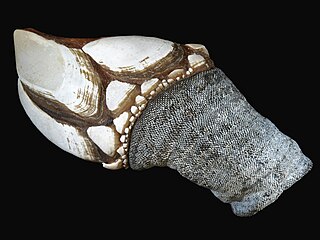
Pollicipedidae is a family of goose barnacles.

Lepadidae is a family of goose barnacles, erected by Charles Darwin in 1852. There are about five genera and more than 20 described species in Lepadidae.
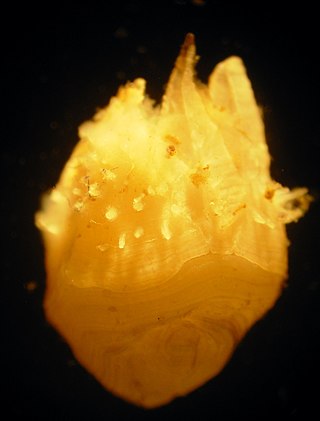
Acasta is a genus of barnacles in the family Balanidae, containing the following species:

Pollicipes is a genus of goose barnacles, first described by William Elford Leach in 1817. It comprises four species of marine suspension-feeders.
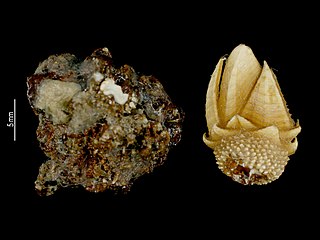
Calanticidae is a family of acorn barnacles in the order Calanticomorpha. There are about 12 genera and more than 60 described species in Calanticidae.
Conopea is a genus of barnacle, containing the following species:
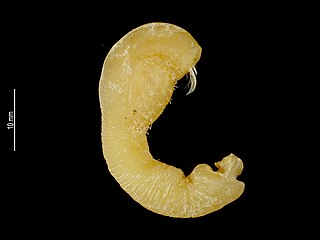
Heteralepas is a genus of goose barnacles in the family Heteralepadidae. which was first described in 1907 by Henry Augustus Pilsbry.
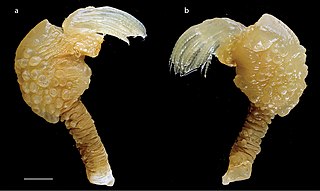
Paralepas is a genus of goose barnacles in the family Heteralepadidae.
Dianajonesia is a genus of goose barnacles in the family Poecilasmatidae. The taxon is a replacement name for the previously used Temnaspis, which by precedence is now accorded to a genus of megalopodid beetles. The type species of the genus is D. fissum, originally described by Charles Darwin as Poecilasma fissa. The genus contains the following species:
Oxynaspididae is a family of goose barnacles in the order Lepadiformes.
Oxynaspis is a genus of goose barnacles in the order Lepadiformes.

Tetraclitidae is a family of sessile barnacles in the order Balanomorpha. There are about 10 genera and more than 50 described species in Tetraclitidae.

Scalpellidae is a family of acorn barnacles in the order Scalpellomorpha. There are about 25 genera and 220 described species in Scalpellidae.

Scalpellomorpha is an order of acorn barnacles in the class Thecostraca. There are about 11 families in 3 superfamilies and more than 450 described species in Scalpellomorpha.

Calanticomorpha is an order of acorn barnacles in the class Thecostraca. There are 3 families and more than 90 described species in Calanticomorpha.
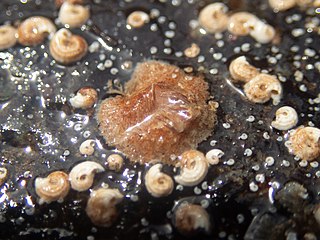
Verruca is a genus of asymmetrical sessile barnacles in the family Verrucidae. There are about 20 described species in Verruca, around half of them extinct.












